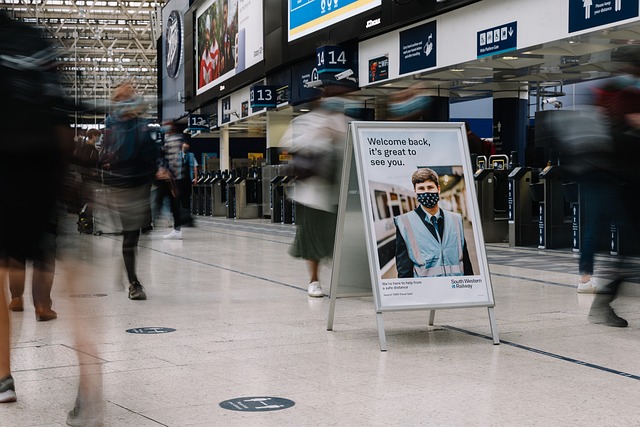AI and Natural Language Processing (NLP) are transforming dining experiences through advanced climate control solutions. Utilizing machine learning, these tools interpret customer preferences, environmental data, and real-time settings to autonomously adjust room temperatures, enhancing comfort without manual interventions. NLP also enables personalized experiences by tailoring lighting, music, and temperature based on dietary needs, boosting customer satisfaction and energy conservation. This cutting-edge technology positions businesses at the forefront of sustainable practices in competitive AI-driven dining environments.
“Unleash the power of natural language processing (NLP) in revolutionizing the dining experience with AI climate control! This article explores cutting-edge AI business tools designed to transform restaurant operations. From understanding customer preferences to creating personalized environments, NLP is a game-changer.
We’ll delve into how these tools adapt spaces, enhancing guest comfort and satisfaction. Restaurant owners will discover benefits ranging from efficient energy management to improved customer engagement. Get ready to navigate the future of dining, where AI meets human interaction.”
- Understanding AI Business Natural Language Processing Tools
- The Role of NLP in AI Climate Control for Dining Environments
- Benefits and Implementation Strategies for Restaurant Owners
Understanding AI Business Natural Language Processing Tools

AI Business Natural Language Processing (NLP) tools are transforming the way we interact with technology, particularly in dynamic settings like dining environments. By leveraging machine learning algorithms to interpret human language, these tools offer innovative solutions for climate control, enhancing customer experiences and optimizing operational efficiency. For instance, AI-driven systems can analyze patron preferences, temperature settings, and real-time environmental data to automatically adjust room temperatures, ensuring a comfortable dining atmosphere without manual intervention.
This technology goes beyond mere comfort, however. By integrating NLP with smart buildings, businesses can create dynamic and responsive spaces. Imagine a restaurant where the AI system understands specific dietary requirements and adjusts lighting, music, and temperature accordingly, providing a personalized experience tailored to each guest. This not only improves customer satisfaction but also contributes to energy conservation by optimizing resource use in real-time, aligning with sustainability goals, especially in the competitive AI climate control for dining environments.
The Role of NLP in AI Climate Control for Dining Environments

Natural Language Processing (NLP) plays a pivotal role in enhancing and optimizing AI climate control systems designed for dining environments. By enabling machines to understand human language, NLP allows patrons to interact naturally with the environmental controls. This interaction can range from simple voice commands like “Make it warmer” or “Cooler here,” to more complex requests tailored to personal preferences, dietary needs, or even cultural norms. With NLP integration, AI climate control systems become more intuitive and user-friendly, fostering a comfortable and enjoyable dining experience.
Furthermore, NLP facilitates the collection and analysis of valuable customer feedback. By processing patron interactions, these systems can learn and adapt to individual preferences, dynamically adjusting settings in real time. This not only improves customer satisfaction but also contributes to energy efficiency by optimizing heating, ventilation, and air conditioning (HVAC) operations. In essence, NLP empowers AI climate control mechanisms to deliver personalized, sustainable, and responsive environmental management within dining spaces.
Benefits and Implementation Strategies for Restaurant Owners

AI natural language processing (NLP) tools offer restaurant owners a powerful way to enhance customer experience and streamline operations. One notable benefit is its ability to revolutionize AI climate control for dining environments. By analyzing guest feedback, NLP can adjust temperature, lighting, and music based on real-time preferences, creating a more comfortable and personalized atmosphere. This not only improves satisfaction but also encourages longer stays and repeat visits.
Implementing these tools involves integrating them into existing systems like reservation software or point-of-sale terminals. Restaurant owners should focus on data privacy and security, ensuring customer information is handled with care. Customization is key; tailoring AI responses to the unique needs of the restaurant and its clientele will yield better results. Additionally, providing staff training to understand and utilize these technologies effectively is essential for successful integration.
AI business natural language processing (NLP) tools are transforming various industries, particularly in the context of AI climate control for dining environments. By understanding and leveraging NLP, restaurant owners can enhance customer experiences through personalized temperature and ambiance settings. The benefits are clear: improved satisfaction rates, efficient energy management, and a competitive edge. Implementing these strategies involves integrating NLP with existing systems, providing staff training, and collecting customer feedback to optimize settings over time. Embracing AI climate control is not just a technological advancement but a smart business move that ensures your restaurant remains a vibrant, comfortable, and memorable dining destination.
